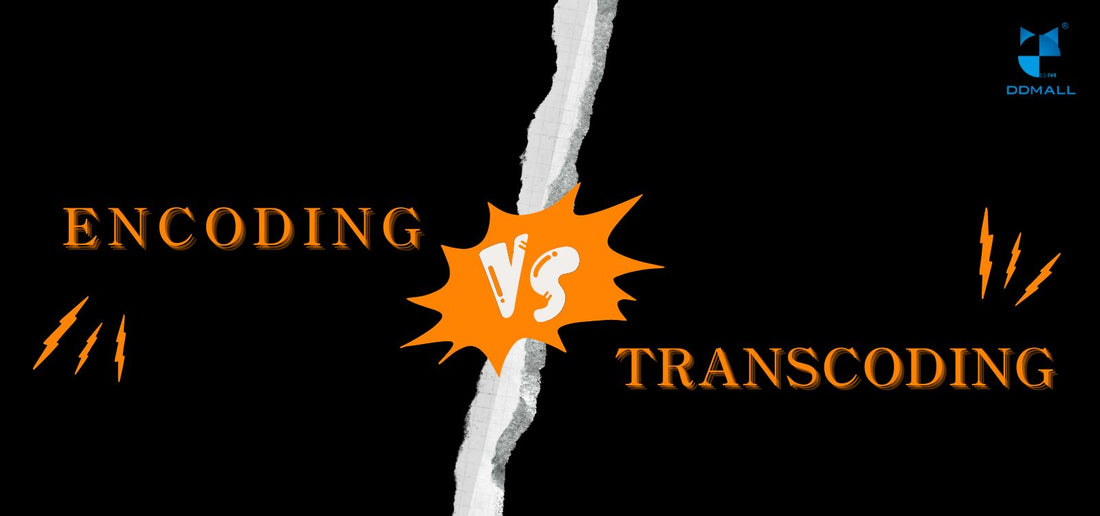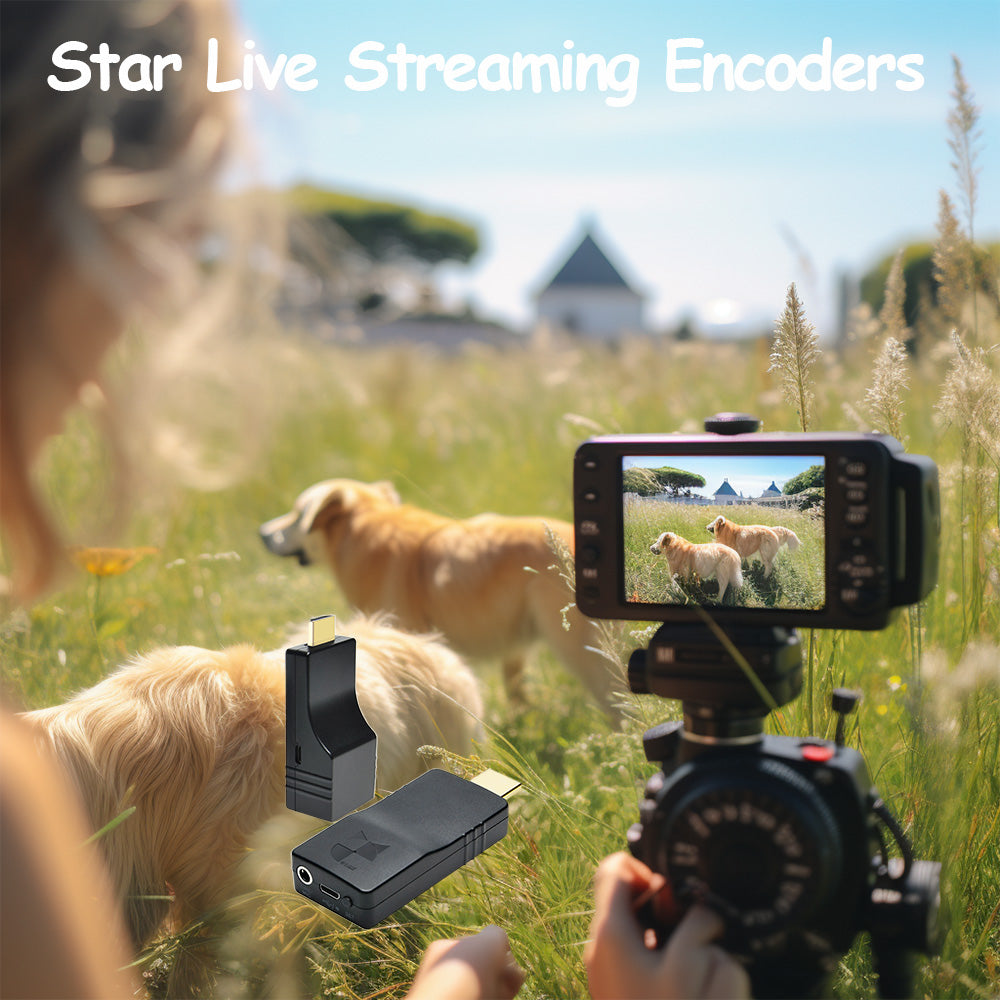
The Fascinating World of Encoding and Transcoding: Unraveling the Differences
Share
In today's digital age, where multimedia content is ubiquitous, the terms "encoding" and "transcoding" are often used interchangeably. However, these two processes are distinct and serve different purposes in the world of digital media. Understanding the differences between encoding and transcoding is crucial for anyone involved in content creation, distribution, or consumption.
In this comprehensive guide, we will delve into the intricacies of encoding and transcoding, exploring their definitions, functionalities, and the impact they have on the digital landscape. So, let's embark on this journey of discovery!
Table of Contents:
- What is Encoding?
- The Process of Encoding
- Types of Encoding
- What is Transcoding?
- The Process of Transcoding
- Types of Transcoding
- Key Differences Between Encoding and Transcoding
- FAQs
- Conclusion
What is Encoding?
Encoding is the process of converting data or information into a specific format that is suitable for storage, transmission, or playback. It involves transforming raw data into a structured format that can be easily interpreted by computer systems or multimedia devices. Encoding is an essential step in the digital media workflow, enabling efficient storage, distribution, and playback of various forms of multimedia content, including audio, video, images, and text.

The Process of Encoding
The process of encoding typically involves several stages, each contributing to the transformation of data into a specific format. Here are the key steps involved in the encoding process:
- Preprocessing: This initial stage involves preparing the raw data for encoding. It may include tasks such as data cleaning, normalization, and formatting to ensure consistency and compatibility.
- Compression: Compression is a vital aspect of encoding, especially when dealing with multimedia content. It reduces the size of the data by eliminating redundant or unnecessary information, resulting in more efficient storage and transmission. Different compression algorithms, such as lossless and lossy compression, are employed depending on the requirements of the encoded data.
- Conversion: In this stage, the data is converted into a specific format that aligns with the intended purpose of encoding. For example, audio data may be converted into formats like MP3 or AAC, while video data may be encoded into formats like H.264 or VP9.
- Encoding Parameters: Various parameters, such as bitrate, resolution, frame rate, and color space, are determined during the encoding process. These parameters define the quality and characteristics of the encoded data, impacting factors like file size, playback quality, and compatibility with different devices.
- Metadata Addition: Metadata, such as title, author, description, and copyright information, can be added to the encoded data. This metadata provides additional context and enhances the organization and searchability of multimedia content.
Types of Encoding
Encoding techniques vary depending on the type of data being encoded and the intended purpose. Here are some common types of encoding:
- Audio Encoding: Audio encoding involves converting analog audio signals into digital formats. Popular audio encoding formats include MP3, AAC, FLAC, and WAV.
- Video Encoding: Video encoding is the process of converting raw video data into compressed digital formats. Common video encoding formats include H.264, HEVC, VP9, and AV1.
- Image Encoding: Image encoding is used to compress and store digital images efficiently. JPEG, PNG, GIF, and WebP are widely used image encodingformats.
- Text Encoding: Text encoding is the conversion of textual data into a specific character encoding scheme. Examples of text encoding formats include ASCII, Unicode, UTF-8, and ISO-8859.
What is Transcoding?
Transcoding, on the other hand, is the process of converting media files from one encoded format to another. It involves decoding the source file and then re-encoding it into a different format. Transcoding is often required when there is a need to adapt multimedia content to different devices, platforms, or network conditions. It allows for compatibility across various systems and ensures optimal playback quality and performance.

The Process of Transcoding
The process of transcoding involves the following steps:
- Decoding: The source file is decoded, meaning it is converted back to its original uncompressed format. This allows for manipulation and modification of the content before re-encoding.
- Manipulation: Transcoding offers the opportunity to modify various parameters of the media file, such as resolution, bitrate, frame rate, or color space. These modifications can be made to optimize the content for specific devices or platforms.
- Re-encoding: Once the necessary modifications have been made, the media file is re-encoded into the desired format. This involves compressing the content using a different encoding algorithm than the original file.
- Encoding Parameters: Similar to the encoding process, transcoding also involves determining parameters such as bitrate, resolution, frame rate, and color space. These parameters ensure that the transcoded file meets the desired specifications and requirements.
Types of Transcoding
Transcoding can be categorized into different types based on the purpose and the nature of the transcoding process. Here are a few common types of transcoding:
- Format Transcoding: This type of transcoding involves converting media files from one format to another. For example, converting an MP4 video file to an AVI format.
- Resolution Transcoding: Resolution transcoding involves changing the resolution of a media file. This is often done to adapt content to different screen sizes or to reduce file size.
- Bitrate Transcoding: Bitrate transcoding adjusts the bitrate of a media file. It is commonly used to optimize streaming quality based on available network bandwidth.
Codec Transcoding: Codec transcoding involves changing the encoding algorithm used in the media file. This is done to ensure compatibility with different devices or platforms.
Key Differences Between Encoding and Transcoding
Although encoding and transcoding share similarities, they serve distinct purposes in the digital media landscape. Here are the key differences between encoding and transcoding:

- Purpose: Encoding focuses on converting raw data into a specific format for storage, transmission, or playback, while transcoding involves converting media files from one encoded format to another to ensure compatibility and optimize performance.
- Process: Encoding involves the transformation of raw data into a structured format, including compression and conversion. Transcoding, on the other hand, involves decoding the source file, making modifications, and re-encoding it into a different format.
- Modifications: Encoding does not typically involve modifications to the content itself, whereas transcoding allows for manipulation of parameters such as resolution, bitrate, or codec to optimize the content for specific devices or platforms.
- Content: Encoding involves the transformation of raw data into a structured format, including compression and conversion. Whereas transcoding allows for manipulation of parameters such as resolution, bitrate, or codec to optimize the content for specific one encoded format to another to ensure compatibility and optimize performance and ensures compatibility across differ
- Compatibility: Encoding ensures compatibility with the desired format, while transcoding ensures compatibility across different devices, platforms, or network conditions.
- File Size: Encoding can impact file size through compression techniques, while transcoding can further optimize file size by adjusting parameters such as resolution or bitrate.
- Quality: Encoding can impact the quality of the encoded data, while transcoding can either maintain the quality or introduce slight degradation depending on the chosen parameters and encoding algorithms.
FAQs
Q1: What is the main purpose of encoding?
The main purpose of encoding is to convert raw data into a specific format that is suitable for storage, transmission, or playback. It enables efficient handling of multimedia content and ensures compatibility with different devices and platforms.
Q2: How does transcoding differ from encoding?
Transcoding involves converting media files from one encoded format to another, focusing on compatibility and optimization for specific devices or platforms. Encoding, on the other hand, is the process of converting raw data into a specific format without modifications.
Q3: Can you provide examples of encoding and transcoding formats?
Examples of encoding formats include MP3, AAC, H.264, JPEG, and ASCII
Q4: When is transcoding necessary?
Transcoding is necessary when the target device, software, or platform requires a specific format that differs from the original file. It allows for compatibility and adaptability across different devices and platforms.
Q5: Can transcoding alter other parameters of the media file?
Yes, transcoding can involve changing parameters such as resolution, bit rate, or frame rate to suit the requirements of the target platform or device.
Q5: How does encoding benefit streaming services?
Encoding is essential for streaming services as it allows for the efficient delivery of high-quality content to users while minimizing buffering and loading times. By encoding videos into optimized formats, streaming services can ensure smooth playback across various devices and network conditions.
Conclusion
In conclusion, encoding and transcoding are vital processes in the world of multimedia content.
While encoding focuses on compressing data for efficient storage and transmission, transcoding enables compatibility and adaptability across different devices and platforms. Understanding the differences between encoding and transcoding is crucial for content creators, media professionals, and anyone involved in the digital realm. By harnessing the power of encoding and transcoding, we can unlock new possibilities for seamless media experiences and efficient data management in the ever-evolving digital landscape.
Remember, encoding and transcoding are not interchangeable terms. They represent distinct processes with unique purposes. So, the next time you encounter these terms, you'll have a deeper understanding of their significance and how they contribute to the fascinating world of multimedia content.
Now that you have gained valuable insights into encoding and transcoding, feel free to explore more about these topics and discover the endless possibilities they offer.

